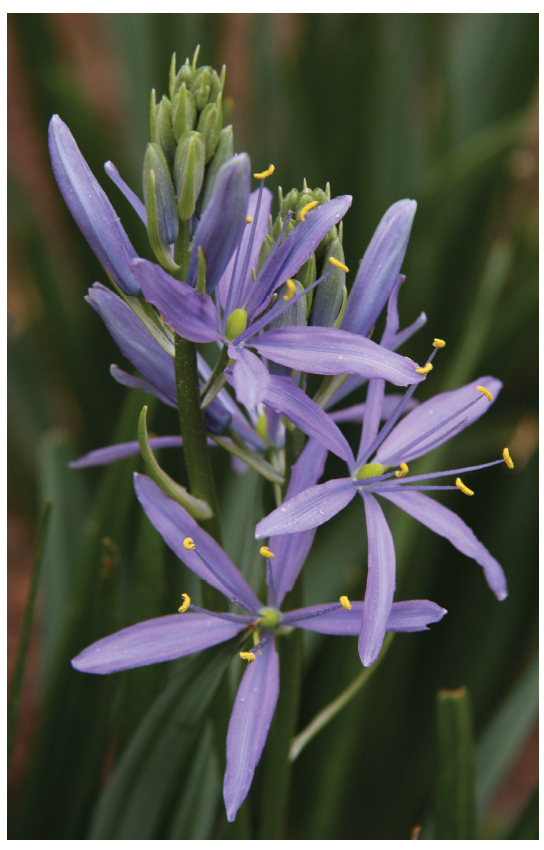November is a good time to plant spring-blooming bulbs in Cary, and while the usual offerings of tulips, daffodils and crocus are certainly worth considering, this fall, maybe think about going a little wild. In this case, “wild” refers to camassia, a bulbous beauty native to North Carolina and many other parts of the country.
In particular, Atlantic camas, also known as wild hyacinth and botanically as Camassia scilloides, occurs naturally in moist meadows and other open areas across the region. This camassia is a pretty plant, but in the wild, look and don’t pick, as it is considered a threatened species in our state. Besides, it is much easier to visit your friendly local garden center, which at this time of year should have cultivated camassia bulbs for sale.
And many outstanding cultivars have been produced by commercial nurseries. The popular selection ‘Caerulea’ will dust the spring garden with dazzling sweeps of blue, while ‘Blue Danube’, in spite of its name, has bluish blossoms tinged with a pretty purple. For those lovers of lighter colors, consider the pale, near-white blooms of ‘Alba’. And to add a bit of sass to the garden, strike a harmonious note with ‘Blue Melody’ and its bluish-purple blossoms suspended above feisty, eye-catching variegated foliage. The white-flowering ‘Sacajawea’ also flaunts striped leaves.
If your search locally for such cultivars comes up empty, most of these beautiful camassia selections can be ordered online from Brent and Becky’s Bulbs in Gloucester, Va., at: www.brentandbeckysbulbs.com.
Camassia shows off its clusters of starlike flowers on thin, 2- to 3-foot stems surrounded by straplike leaves in the spring. A planting location that receives plenty of sun in the morning and some filtered shade in the afternoon is ideal. Evenly moist garden soil is preferred, but gardeners in the Piedmont will be pleased to know that this tough plant also tolerates heavy clay. In addition, it is one of the few spring-flowering bulbs that will do well in low, moist areas. Finally, add to its positive attributes the fact that it is deer resistant.
Camassia plantings will easily naturalize in Cary gardens and come back year after year. An ideal setting is among summertime herbaceous perennials that would rise up and take center stage after this bulb’s bloom spikes and foliage die down.
Fading autumn is the prime planting time for camassia selections. Bulbs should be planted pointed ends up about 4 to 5 inches in the ground and 5 to 6 inches apart. After becoming established, a healthy, happy camassia will reproduce both by bulblets forming off the original bulb and seeds from the flowers.
The humble camassia isn’t as familiar as tulips, daffodils and crocuses, but this doesn’t mean it is inferior. In fact, having native roots deeply entrenched in this country, it is a tough plant able to take some of the roughest treatment Mother Nature can dish out, and come the spring, when the blooms open to salute the new growing season, they are nothing short of gorgeous.
L.A. Jackson is the former editor of Carolina Gardener magazine. If you would like to ask him a question about your garden, go to his website at www.southeastgardening.com.







